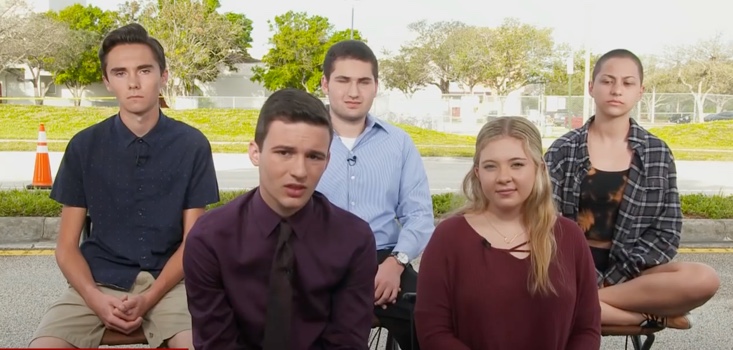Why Shouldn't Kids Lead the Charge on Gun Safety?

Last week, 17 Marjory Douglas Stoneman high school students and teachers died at the hands of a former student firing an assault rifle. Almost immediately, some of the surviving students channeled their grief and anger into gun safety activism. Just as quickly, conservative commentator Bill O’Reilly questioned why the media was promoting the opinions of teenagers who were “in an emotional state.” Similarly, others cast doubt on the students’ ability to have an informed perspective on gun regulations. In National Review, Ben Shapiro asked, “What, pray tell, did these students do to earn their claim to expertise?”
Unquestionably, the students have a right to express their views. Moreover, their firsthand experience lends credence to their leadership of our nation’s current debate over gun safety. In fact, the Parkland students are not the first youth galvanized by tragedy to take action that transforms a public conversation on policy matters. History shows that youth activism motivated by the death of a classmate can effect changes in laws that will protect the safety of children. Researchers found that after the passage of bike helmet laws, the mortality rate among bicyclists 1 to 15 years in age decreased over 50 percent. In the United States, one of the earliest and most influential of these laws had its origins in Maryland student activism.
In the fall of 1989, 13-year-old Christopher Kelley of Howard County, Maryland, was riding his bike when he was struck by a car. The collision killed Kelley, who was not wearing a helmet. Kelly’s death arrived on the heels of another student’s bike-related fatality early that spring. In the wake of these tragedies, many of Kelly’s classmates at Glenwood Middle School began advocating for action to prevent other such deaths. With the help of several teachers, about 50 eighth grade students got involved in activism efforts in one of three targeted efforts: the creation of bike safety videos, the staging of bike safety demonstrations, and the promotion of legislation. Eighth grader Brian Meshkin, who was on the scene of the crash that killed Kelley, led the students’ committee on bike helmet legislation. The group prepared surveys to document the need for a law, called newspapers and television stations to seek editorial support, and testified during a Howard County Council meeting.
As a result of their activism, the local council approved the new ordinance on May 7, 1990. Due to this new rule and accompanying bike safety education, researchers found that helmet use among people younger than 16 in the community increased from 4 percent to 47 percent. That was the highest rate of bicycle helmet use ever documented among U.S. children.
In celebrating the passage of the law, doctors and safety advocates emphasized the importance of the students’ advocacy. The chair of the American Academy of Pediatrics (AAP) Maryland Committee on Accident and Poison Control said, “It was the school children who were most persuasive. Without the support of children, I’m not sure it would have passed.”
Soon after the Howard County law passed, numerous other state and local governments legislated bike helmet laws for their children. Brian Meshkin recalled that the “National Safe Kids Campaign at the time was just getting started and they adopted this cause as an issue to grow their organization and to communicate the effort that we had done to others.” As of November 2001, nineteen states and the District of Columbia had enacted legislation requiring children to wear bike helmets. As researchers sought to evaluate the impact of these new laws, they repeatedly highlighted the Howard County precedent.
During the debate over the Howard County bike helmet law, Meshkin defended the student-initiated law against adult critics, writing, “If the parents of Howard County are too irresponsible to understand the reasoning behind this law, let me attempt to appeal to the children of this county.” His 1991 words echo today in the language of the Parkland students, such as Adolfo Calderon, who said, “Adults have failed us and kids are dying because of it.” When it comes to safeguarding the lives and health of children, the youth most affected by tragedy have led the way before. In today’s political gridlock on gun violence, perhaps these students can provide needed momentum to catalyze meaningful change on a national scale.